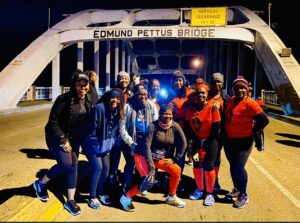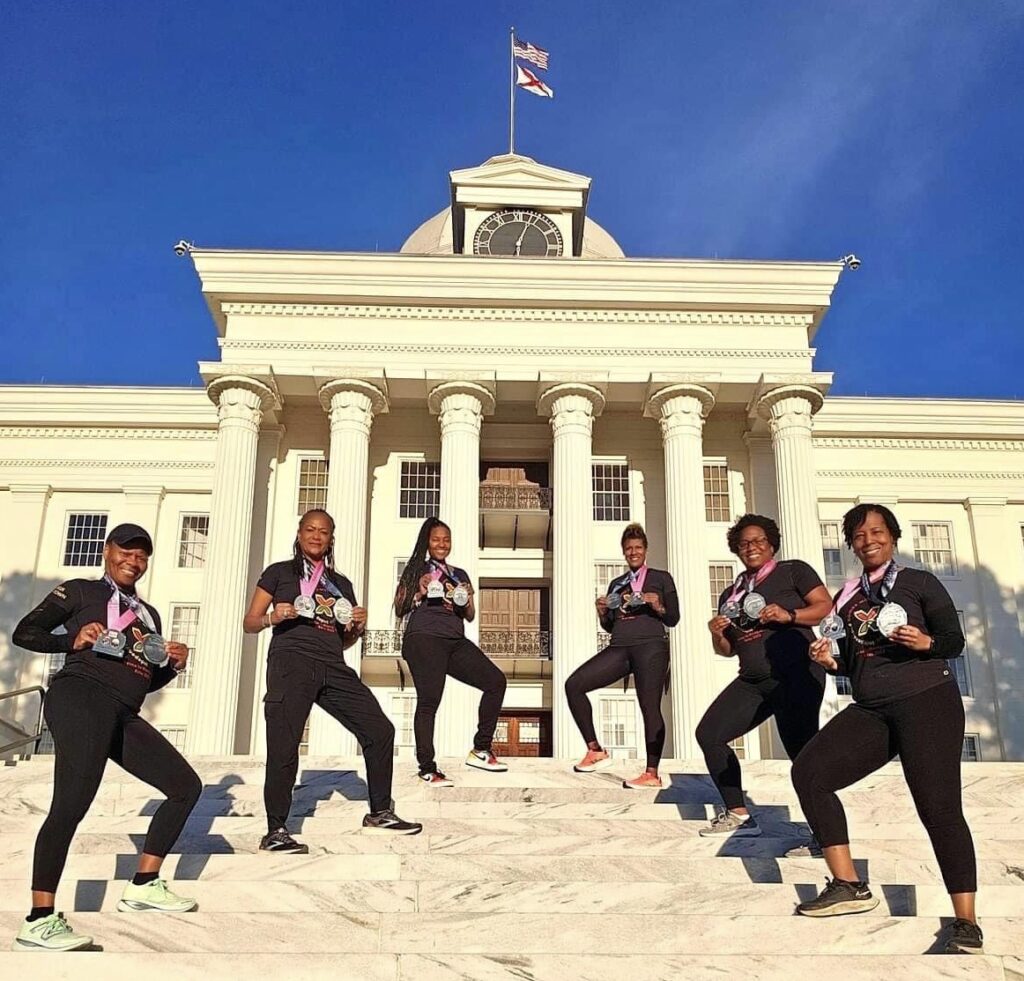Apr 5, 2023
Selma to Montgomery Relay 2023: Liberation and Legacy
“History, despite its wrenching pain, cannot be unlived, but if faced with courage, need not be lived again,” Maya Angelou
Last month, I—along with my team of six—ran the 50+ miles from Selma to Montgomery, Alabama, along the same route that Dr. Martin Luther King, Jr. and 2,000 other protesters marched a mere 58 years ago, through downtown Selma across the Edmund Pettus Bridge to the state capital in Montgomery as part of the civil rights movement and in an attempt to register Black voters in the South.
Even though the Civil Rights Act of 1964 forbade discrimination in voting on the basis of race, it did little in some parts of the south to ensure African Americans the basic right to vote. Plus, efforts by civil rights organizations to register Black voters were met with fierce resistance in southern states such as Alabama. But, the movement was not easily deterred as evidenced in the march from Selma to Montgomery, which was set in motion in early 1965, when the decision was made to make Selma the focus of a Black voter registration campaign.
The 54-mile journey from Selma to Montgomery was the culmination of three marches—the first being organized and led by John Lewis and Hosea Williams on March 7, 1965, ending in brutal attacks on the participants by state troopers on the Pettus Bridge, becoming known as Bloody Sunday. The second march on March 9, 1965, was halted by a federal injunction. Finally, after a federal court order permitted the protest, the voting rights marchers left Selma on March 21, 1965, under the protection of federalized National Guard troops. Four days later, they reached Montgomery with the crowd growing to 25,000 by the time they reached the capital steps.
The events in Selma led to Congress passing the Voting Rights Act of 1965, one of the most expansive pieces of civil rights legislation in American history.

The Pettus Bridge-which still bears the name of a white supremacist-is now an enduring and engrained symbol of the civil rights movement. The Selma to Montgomery Relay started a few feet away from the base of the bridge. As runners and cyclists crossed the steel, arched structure that spans the Alabama River heading towards Montgomery, the present truly intersected with the past. On this journey, we were reminded of how far we’ve come AND how far we still have to go.
Personally running two of the nine legs-segments three and nine for a total of 11.6 miles-including an 8.6-mile stretch along Highway 80 and then the final 3 miles of the route from G.W. Carver High School, passing the bus stop where Rosa Parks boarded the segregated bus and refused to give up her seat to a white man, by Dexter Avenue Baptist Church where Dr. King served as pastor from 1954 to 1960 and ascending to the steps of the Alabama state capital evoked both pride and pain-for their courage and the consequences of it.
During this experience, we were also reminded that independence comes with its responsibilities, and we all have a role and a duty to vote in local, state, and federal elections. Regardless of your political affiliation, your right and your responsibility to vote should never be taken for granted.
They marched so we could run. May we forever be our ancestors’ wildest dreams…

By: Joy Harrell @joyrunsrealestate
Joy Harrell is a licensed real estate agent and co-owner of The Sift Sisters bakery based in Houston, Texas. She is a native Houstonian and graduate of the University of Houston—go Coogs! When she is not helping people buy, sell or invest in real estate, she can be found hanging or traveling with her hubby, running or biking the streets and trails in and around Houston, mentoring girls or testing new food and cocktail recipes.

